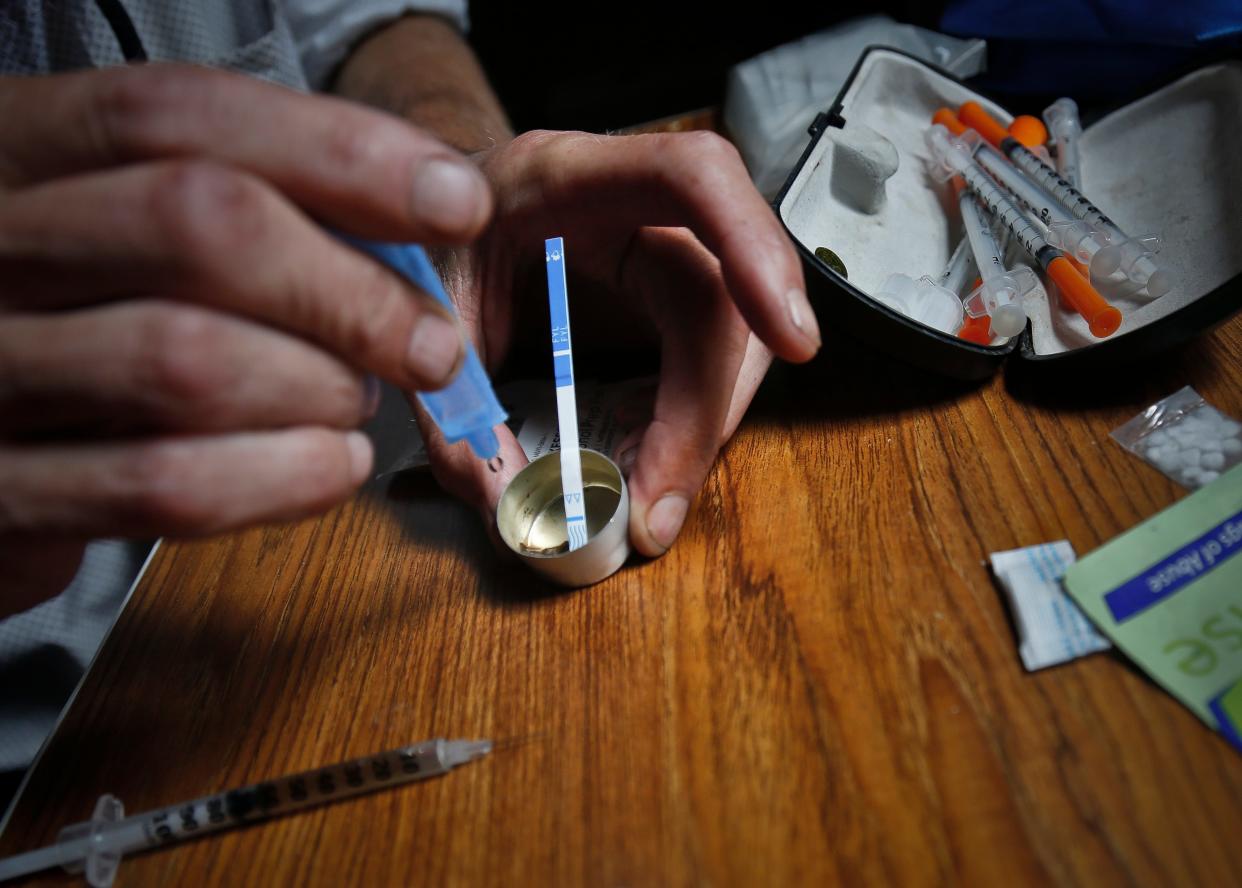Arizona's new fentanyl laws embrace reality, not a failed 'war on drugs'

Fox News recently reported that Arizona is handing out fentanyl test strips to county health departments to help combat surging drug overdose deaths. So far, the state has distributed the strips to six counties, while Maricopa County is getting test strips directly from the Centers for Disease Control and Prevention.
This is a smart move.
After Arizona overdose deaths jumped an estimated 48% during the first eight months of 2020 – and rose 32% in Maricopa County in all of 2020 – lawmakers finally decided to embrace the strategy known as “harm reduction.”
Harm-reduction strategies begin with the realistic and nonjudgmental premise that “there has never been, and will never be, a drug-free society.”
Akin to the credo of the medical profession – “First, do no harm” – harm reduction seeks to avoid measures that exacerbate the harms the black market already inflicts on nonmedical users and to focus strictly on the goal of reducing the spread of disease and death from drug use.
Bill allows users to test pills for fentanyl
In May 2021 the Legislature passed a bill that removed fentanyl test strips from the state’s list of legally prohibited drug paraphernalia, and Gov. Doug Ducey signed it into law.
Fentanyl test strips, made by a Canadian biotechnology company, were designed for urine drug screening. The Food and Drug Administration has not approved test strips for sale in U.S. drugstores or other outlets, but harm reduction organizations have been buying them in bulk and handing them out to IV drug users who use them “off‐label” to test heroin, cocaine and other drugs for fentanyl.
Users break off a small piece of a pill, dissolve it in water, and test it with the strip. If the drug is in powdered or liquid form, testing is even easier.
'Fentazona': A cheap and deadly drug has hijacked Arizona's opioid crisis
Researchers claim the tests strips are highly accurate and can detect up to 10 fentanyl variants that cartels make and smuggle. They also find they save lives by causing drug users to use smaller amounts and/or take a drug more slowly when they detect it contains fentanyl.
Prison time is a futile way to stop drug overdoses
That same month Arizona legislators passed and Gov. Ducey signed another bill that further modified the state’s drug paraphernalia law, so harm reduction organizations can run “syringe services programs,” (SSPs), also known as “needle exchange” programs.
These programs do more than provide clean needles and syringes to prevent the spread of HIV, hepatitis and other infections. They also provide fentanyl test strips and cleaning materials, offer HIV and hepatitis screening, and refer people to drug rehab.
Syringe services programs are endorsed by the National Institute on Drug Abuse, the CDC and the American Medical Association. Dr. Jerome Adams, former President Trump’s surgeon general, visited Arizona in 2019 to promote SSPs.
This wise pivot to harm reduction comes after years of futile efforts to fight overdose deaths through interdiction and law enforcement.
In 2018, Researchers at the University of Pittsburgh reported the overdose rate has been rising exponentially since the late 1970s, with different drugs dominating at different points in time.
Now a new report in the Journal of the American Medical Association predicts the U.S. may be heading towards an even larger wave of overdose deaths.
Time for new tactics in the failed war on drugs
All this is happening despite a 60% drop in opioid prescribing from 2011 to 2020. Furthermore, the Drug Enforcement Administration places quotas on the manufacturing of all types of prescription opioids and ratchets those quotas downward year after year.
By 2019, reduced prescribing led the DEA to announce that less than 1% of controlled substances distributed to retail purchasers were getting diverted. Opioid prescriptions are the wrong target.
Now there are news reports about the growing presence of nitazenes – synthetic opioids 10 to 20 times more potent than fentanyl – among the mix of street drugs.
This should come as no surprise to anyone familiar with what economists call the iron law of prohibition: “The harder the enforcement, the harder the drugs.” Drug prohibition incentivizes cartels to create more potent and powerful drugs. More potent forms can be more easily smuggled and divided into more portions to sell.
Waging the drug war with the same tactics that have failed for the past 50 years and expecting a different result is the definition of insanity. Arizona’s recent turn to harm reduction is a welcome step in the right direction.
Jeffrey A. Singer, MD practices general surgery in Phoenix and is a senior fellow at the Cato Institute. Reach him at JSinger@cato.org.
This article originally appeared on Arizona Republic: Arizona fentanyl laws embrace reality, not a failed 'war on drugs'

